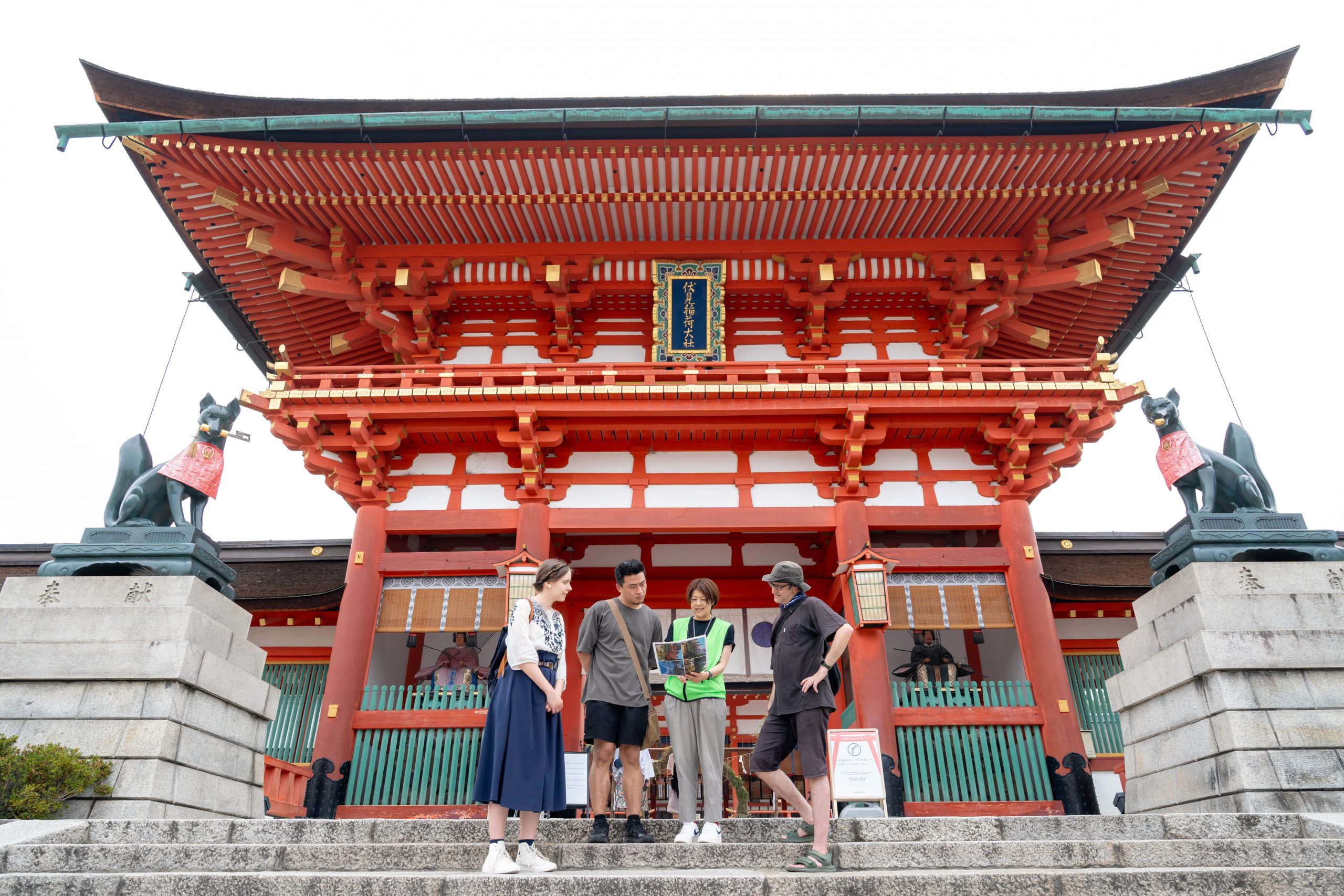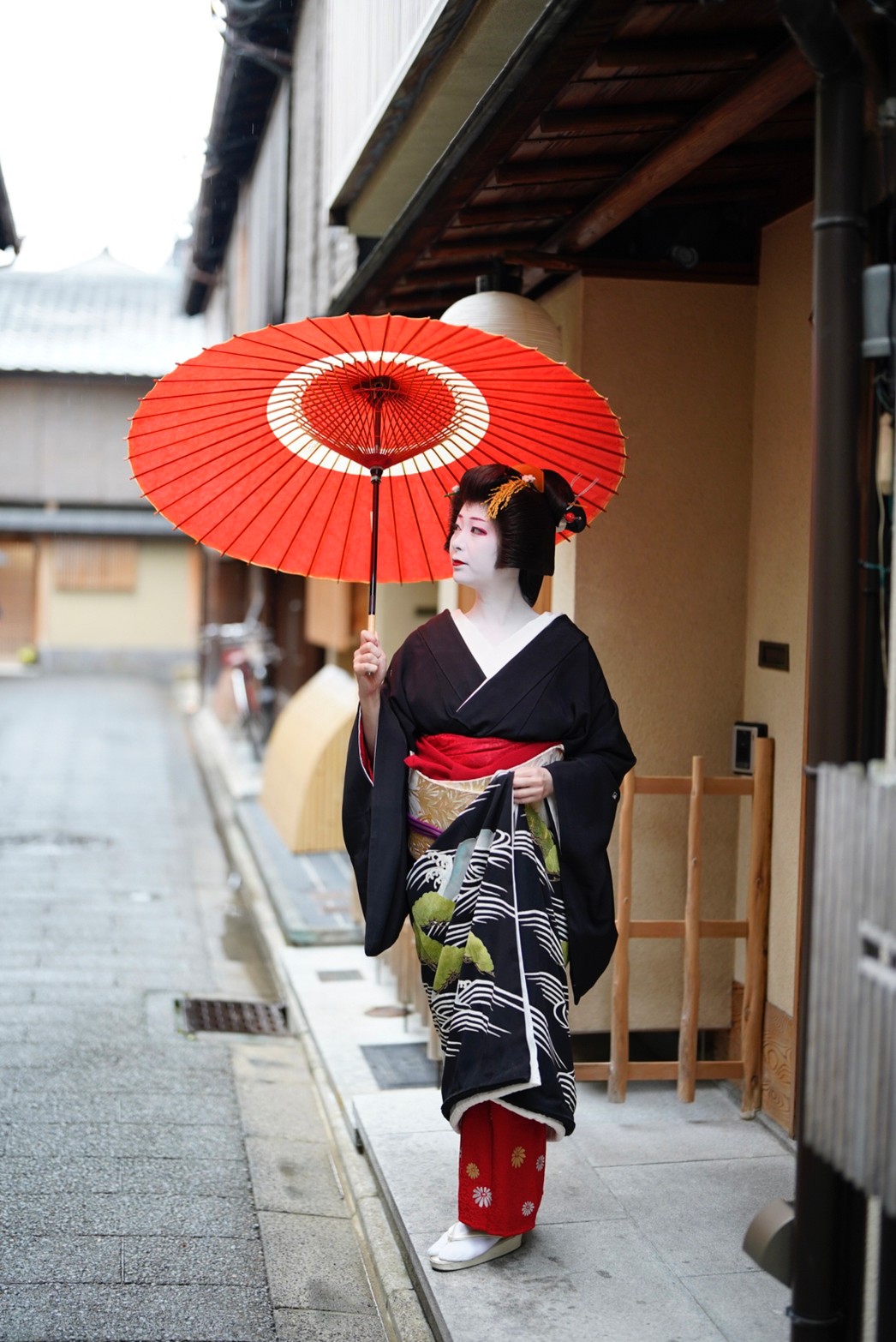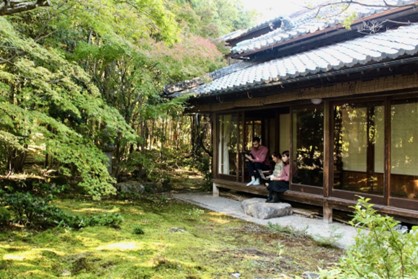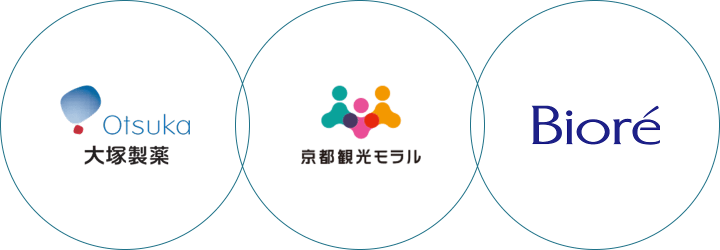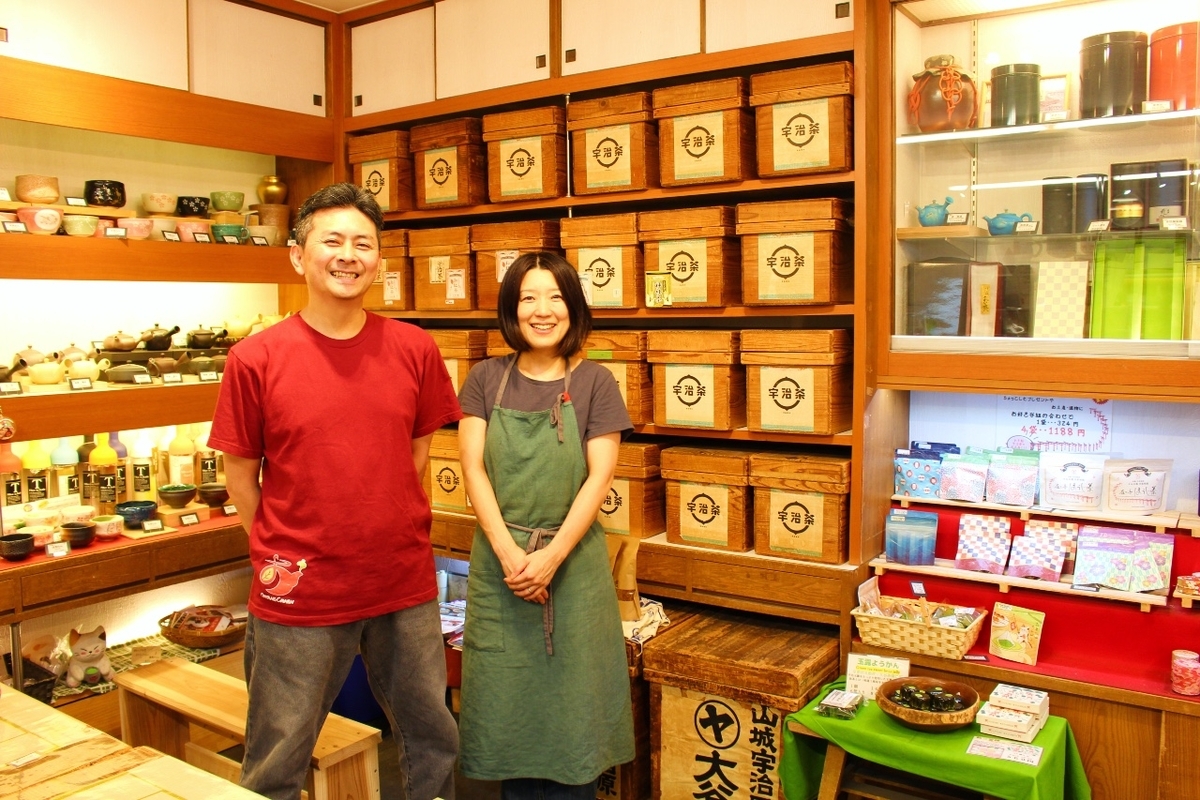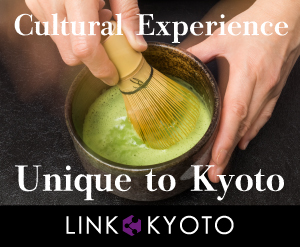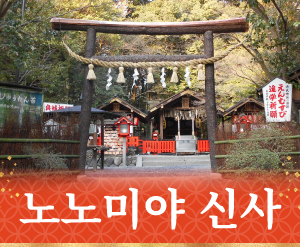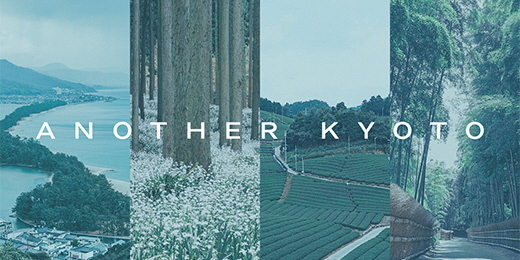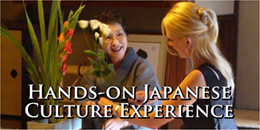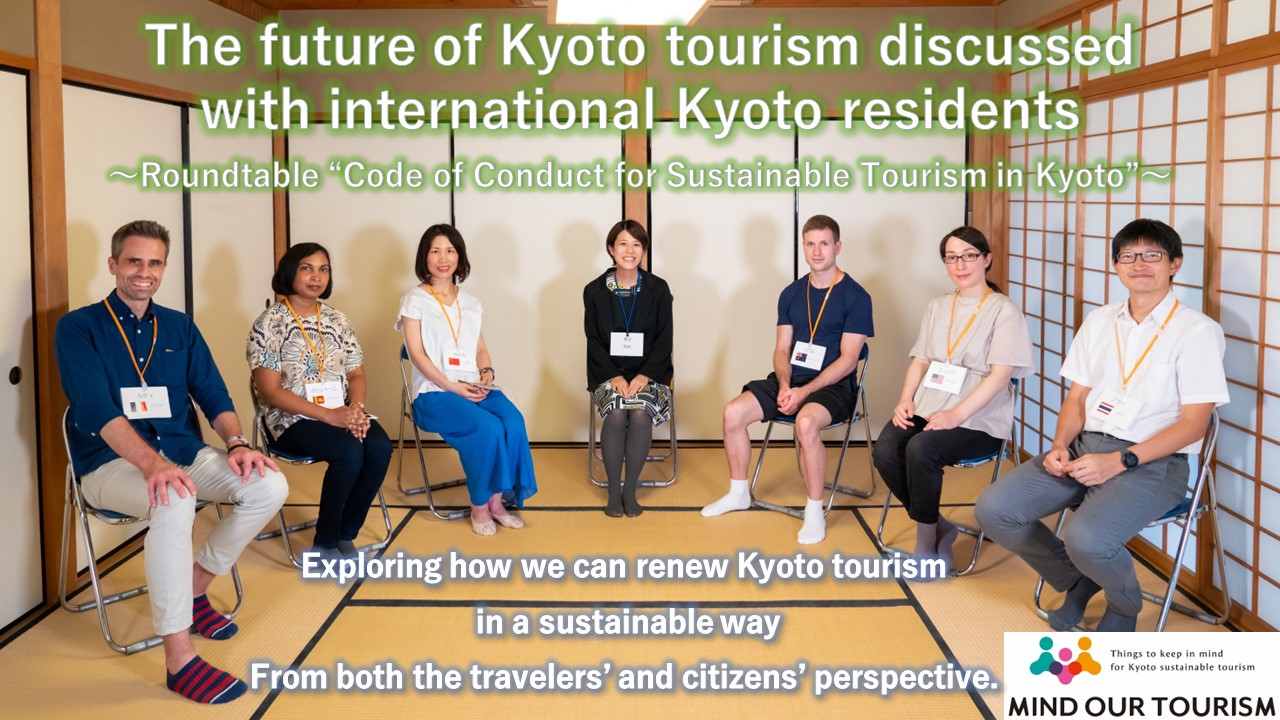
2020년 코로나19 팬데믹이 시작된 이후, 전 세계 사람들은 여행 제한에 직면했고, 특히 관광 관련 산업에 심각한 영향을 미쳤습니다. 교토도 예외는 아니었습니다. 여행사부터 숙박, 음식점, 전통 공예 업체에 이르기까지 다양한 업종이 심각한 타격을 입었습니다. 그러나 현재 일본 입국 제한이 크게 완화되면서, 일부에서는 혼잡과 매너 관련 문제가 다시 발생할 수 있다는 우려를 표명하고 있습니다.
교토시와 교토시 관광협회는 협력하여 홍보 활동을 펼치고 있습니다. 교토의 지속 가능한 관광을 위한 행동 강령 전염병 이전의 상황이 재발하지 않도록 예방하고 관광 산업, 관광객, 주민 등 교토 관광에 관련된 모든 사람에게 다가가 교토의 탁월한 가치를 미래에 전달하고자 합니다.
이번에는 교토에 거주하는 외국인들과 함께, 여행객과 시민의 관점을 모두 갖춘 분들을 만나, 팬데믹 이후의 세계에 맞춰 교토 관광을 어떻게 업데이트할 수 있을지 논의했습니다.

색인
참가자 프로필

루디(프랑스)
프랑스/벨기에 국경 근처에서 자랐습니다. 프랑스 대학교에서 다문화주의를 전공했습니다. 현재 교토에서 미얀마인 아내와 함께 살고 있습니다.
크리샤니(스리랑카)
10년 전 일본인 남편과 결혼했습니다. 교토 국제교류회관에서 근무하고 있습니다.
세스카(중국)
저장성 출신. 교토 국제교류회관에서 사진작가 겸 공공 서비스 통역으로 활동. 신사/사찰 참배를 즐긴다.

리암(호주)
도시샤 대학교 대학원생입니다. 올해 4월 교토로 이사했습니다. 6년 전에도 교토에 거주했습니다. 브라질리언 주짓수를 즐깁니다.
줄리아(미국)
미국에서 태어나 어렸을 때 일본에 처음 왔습니다. 자라면서 일본을 오갔습니다. 통역/번역/가이드를 하고 있습니다. 가이드를 하지 않을 때도 관광을 좋아합니다.
프라치(태국)
방콕 출신. 대학 시절부터 교토에 거주. NPO 직원 및 통역/번역가. 가모가와 강에서 조깅하는 것을 즐긴다.
진행자/면접자: 교토시 관광협회 아리마츠
특별 감사: 교토시 국제재단
*본 토론은 2022년 9월 3일에 진행되었습니다.
Q4. 해외에서 살아본 적이 없다면 눈치채지 못할 것들: 교토의 훌륭하고도 신비로운 환대
아리마츠: 교토에 사시면서 특히 인상 깊었던 서비스가 있었나요? 반대로, 그 가치를 이해하지 못했던 서비스도 있었나요?
리엄: 레스토랑이나 바에서 느낄 수 있는 환대 스타일이요. 예를 들어, 이자카야에 갔을 때 사장님이 먼저 말을 걸어주셨어요. 이곳 사람들이 손님들과 편안하게 소통하는 모습이 정말 인상적이었어요.
루디: 일본은 상점뿐만 아니라 모든 곳에서 환대가 정말 훌륭해요. 구청에 갈 때마다 항상 그렇게 생각해요. 사람들이 친절하고 도움을 많이 주는 모습이 정말 좋아요.
줄리아: 사계절이 뚜렷하지 않은 지역에서 온 저는 교토의 일본식 방에 계절마다 다른 꽃이나 족자가 걸려 있는 모습이 참 마음에 들어요. 마치 방 전체가 계절을 맞이하는 것 같고, 정말 예쁘더라고요.
아리마츠: 반면에, 실망스러운 서비스가 있나요?
줄리아: 가끔은 그렇죠. 예를 들어, 사찰이나 신사에 가서 녹음된 안내 방송을 들을 때, 사실 저는 조용한 분위기를 즐기고 싶을 뿐인데 말이죠. 아니면 너무 많은 안내 표지판이 시야를 가리는 경우도 있고요. 그리고 신발을 벗고 나서 넣어두는 비닐 봉지 소리도요. 조용한 구역 곳곳에 슈퍼마켓에서 나는 소리가 들리면 분위기가 망가져요. 적어도 퇴비로 재활용할 수 있는 재료나 대나무처럼 지속 가능한 재료로 만들었으면 좋겠어요.
루디: 가방 이야기가 나와서 말인데, 처음 일본에서 쇼핑을 갔을 때 포장을 보고 겹겹이 포장되어 있는 게 눈에 띄었어요. 환경적인 측면에서 포장을 좀 줄이는 게 좋겠다고 생각했죠.
크리샤니: 집에 가져오면 쓰레기가 되는 경우가 많거든요. 그래서 따로 포장할 필요가 없어요.
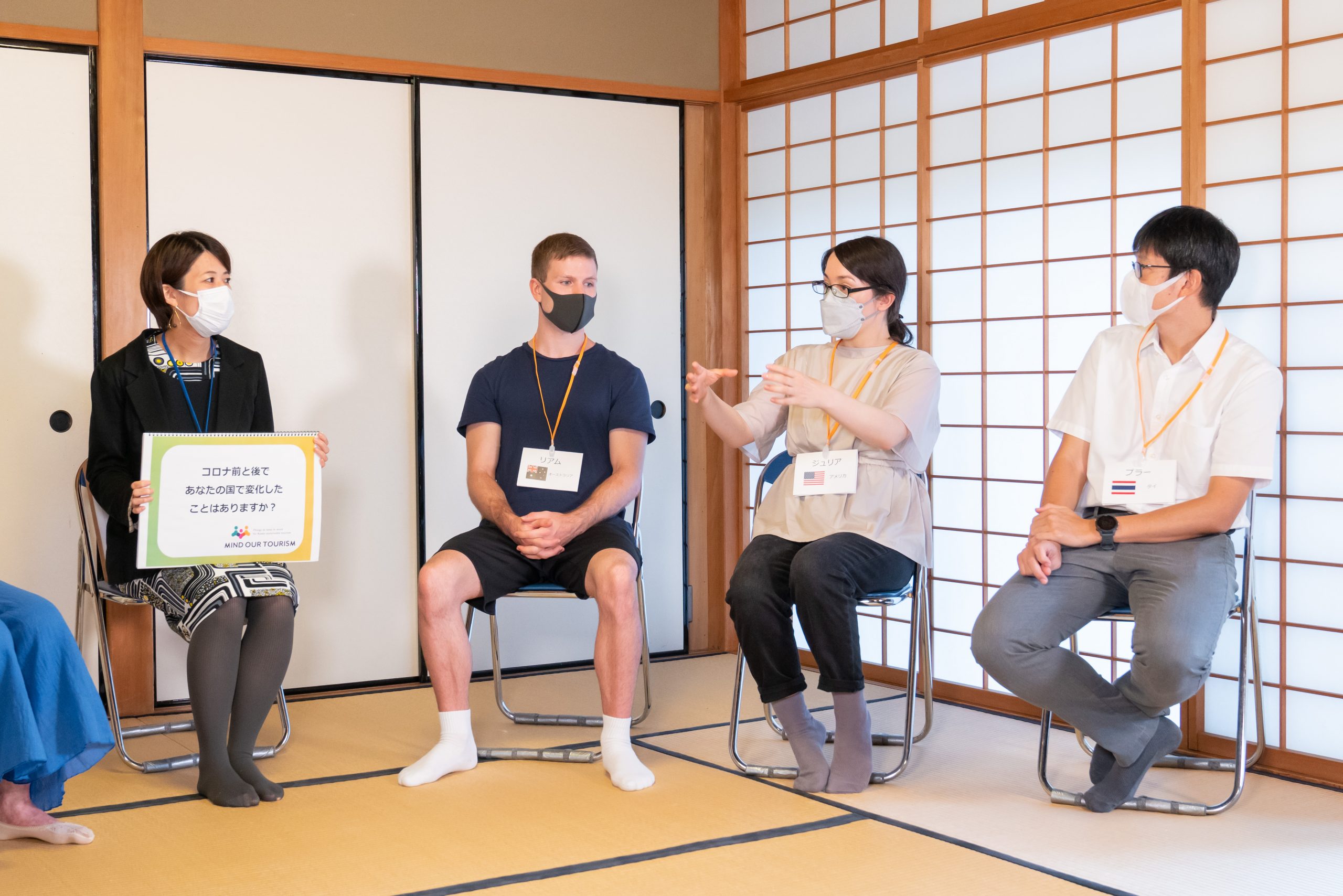
말씀: 포장지 뒷면을 편지지로 재활용할 수 있게 만들면 괜찮을 것 같아요. 하지만 거의 모든 게 한 번 쓰고 나면 버려지잖아요. 정말 낭비예요.
크리샤니: 반면에, 포장하는 관습은 일본 문화의 일부이기 때문에, 그 전통을 어떻게든 이어갈 수 있다면 좋을 것 같아요. 예를 들어, 보자기를 이용한 포장은 매우 일본적이고 멋지죠.
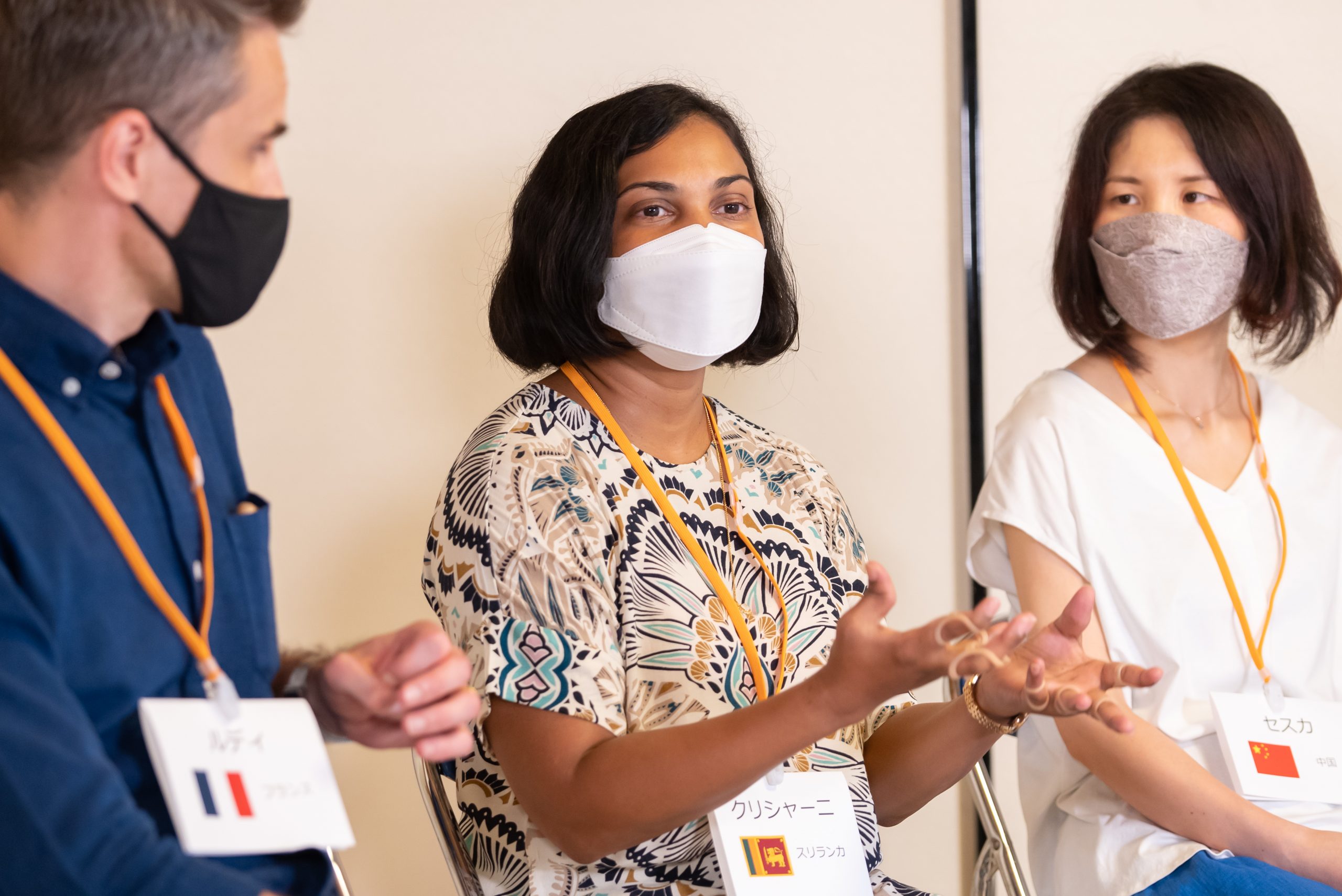
루디: 보자기에 싸거나 "카와이(귀엽다)" 테누구이 천으로 전통적인 방식으로 감싸고 묶는 것은 전혀 괜찮습니다. [보자기는 싸서 들고 다니는 데 쓰는 사각형 천이고, 테누구이는 싸거나 닦는 데 쓰는 직사각형 면 천으로, 둘 다 다양한 색상과 무늬가 있습니다.] 하지만 (그렇게 좋은 게 아니라) 그냥 비닐봉투라면, 우리는 비닐봉투를 줄이는 방법을 찾아야 한다고 생각합니다.
줄리아: 아름다운 포장은 일본 문화의 특징이므로 모든 포장이 잘못되었다고 생각하지는 않습니다. 예를 들어, 일생에 특별한 날에 중요한 선물을 할 때는 전통적인 정교한 포장을 그대로 유지했으면 좋겠습니다. 하지만 일상적인 선물이나 기념품을 위한 포장은 줄이거나 간소화할 수 있습니다.
루디: 일본 문화의 소중한 전통조차도 환경이 파괴되면 보존될 수 없습니다. 환경과 문화 모두 지속 가능한 방법을 찾는 것이 중요하다고 생각합니다.
Q5. 교토 관광을 개선하기 위해 무엇을 할 수 있다고 생각하시나요?
아리마츠: 마지막으로, 코로나 이후 교토 관광과 관련하여 어떻게 개선할 수 있다고 생각하시나요?
루디: 교토는 일본을 방문하는 사람들에게 중요한 역할을 합니다. 일본 문화를 배우기 위해 교토를 찾아오기 때문이죠. 제가 말하는 문화란 유명한 사찰과 신사뿐만 아니라 현지인들의 일상생활까지 아우릅니다. 방문객들은 이곳의 일상생활에 녹아든 관습과 문화적 측면의 차이에 매료되는데, 특히 여행 가이드북에서 흔히 볼 수 있는 내용과는 다르기 때문입니다. 예의범절이나 에티켓의 차이 또한 명확하게 설명하는 것이 중요하지만, 일본인들은 이를 당연하게 여길 수도 있습니다.
크리샤니: 일본에 처음 오는 관광객이라면 긴장할 수도 있을 것 같아요.
관광지에 있는 사찰이나 상점을 방문하는 경우가 많지만, 공원 잔디밭에 앉아 차를 마시는 등 휴식을 취할 수 있는 장소에 대한 정보를 더 많이 제공하면 좋을 것 같습니다.
세스카: 교토에 거주하는 외국인들이 지역 사회와 더욱 깊은 관계를 맺으면 좋겠다고 생각합니다. 소셜 미디어를 통해 자국 사람들에게 정보를 공유함으로써 자국과 일본을 연결하는 다리 역할을 할 수 있을 것입니다. 교토에 대한 심층적인 정보는 같은 나라 사람들을 통해 가장 잘 전달될 수 있다고 생각합니다. 일본에 거주하는 외국인과 지역 주민 간의 문화 교류가 더욱 깊어지면 좋겠습니다.
아리마츠: 관광 정보 확산에 대해 언급하셨는데, 정보 제공 방식에 대해서는 관광 업계 종사자뿐 아니라 교토 시민들도 여전히 관광객들에게 예의범절과 관습을 알릴 방법을 모색하고 있습니다. 외국인 거주자로서, 관광객들이 쉽게 이해할 수 있거나 환영받을 만한 소통 방법이 있을까요?
줄리아: 한 가지 확실한 것은 "하지 마"라는 말은 마치 어린아이처럼 취급받는다는 느낌을 줄 수 있다는 것입니다. 당신은 어른이고 스스로 생각하고 행동할 수 있습니다. 누군가 "이렇게 하지 마, 저렇게 하지 마"라고 하면 마치 초등학교 선생님에게 혼나는 것처럼 느껴질 것입니다.
크리샤니: 네, 일본에 처음 오는 외국인 관광객들은 특히 일본의 관습이나 예절에 대해 잘 모를 수 있습니다. 누군가 알려주지 않으면 배울 기회가 없을 테니까요. 외국인들은 가능한 한 빨리 알려준다면 정말 고마워할 것 같습니다.
루디: 문제는 정보를 얻을 기회가 없다는 거예요. 공항에 도착하면 매너에 대한 안내 책자를 나눠주는 게 어떨까요? 귀여운 만화는 어떨까요?
세스카: 저는 교토 주민에게서 재미있게 예의범절을 배울 수 있는 재밌는 영상이 있어야 한다고 생각합니다.
줄리아: 일본에 오는 비행기 안에서 그 영상이나 애니메이션을 보는 건 어떨까요?
말씀: "교토인이 되는 완벽한 방법" 같은 흥미로운 영상을 유튜브에 업로드하고, 교토 관광 관련 웹사이트나 여행사와 연락할 때 이메일에 링크를 걸어두면 좋을 것 같습니다. 교토를 방문하는 모든 해외 여행객이 어떤 식으로든 그런 영상을 볼 수 있는 시스템을 마련하면 좋을 것 같습니다. 일본에 도착하기 전에 미리 알아둘 수 있으면 더 좋을 것 같습니다.
루디: >무엇보다도, 사람들이 진정한 일본 문화, 특히 관습과 예의범절을 배우는 것이 얼마나 즐거운 일인지 이해하도록 해야 합니다. 단순히 "예의를 지키세요"라는 말만 들어도 오히려 정반대의 행동을 하고 싶은 충동을 불러일으킬 수 있습니다. 아시다시피, 어떤 프랑스 사람들은 규칙을 어기는 걸 좋아합니다 (웃음).
줄리아: 저는 일본 문화나 예절을 재미있게 배울 수 있는 방법이 필요하다고 생각합니다.
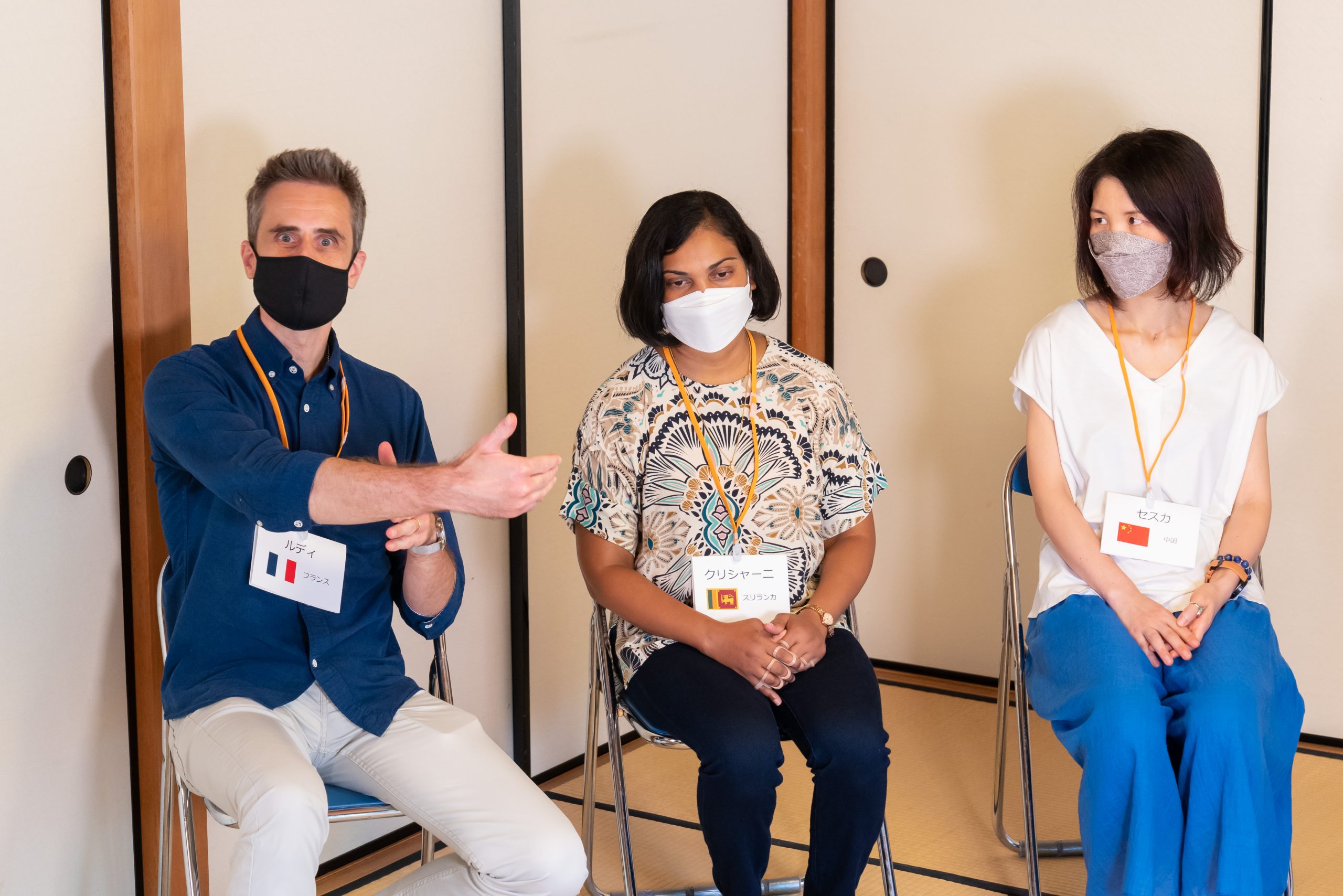
루디: 여행 중에도 "교토 사람처럼 살아보는 건 어떨까요?"라고 말해보는 건 어떨까요?
아리마츠: 아, 그거 흥미로운 생각이군요!
루디: 사실, 사람들은 일본인들의 행동 뒤에 숨겨진 이유를 알고 싶어 할 거라고 생각합니다. 이유를 이해하면, 단순히 하지 말아야 할 것을 듣는 대신 직접 시도해 보고 싶어질 겁니다.
말씀: "교토 사람 체험" 앱을 만들어서 방문객들이 다운로드하도록 하면 어떨까요? 게임처럼 미션을 클리어하고 포인트를 획득하면서 배울 수 있다면 좋을 것 같아요. 또한, 포인트에 따라 "전문가"나 "프로" 같은 등급을 부여하면 더욱 흥미로울 것 같아요.
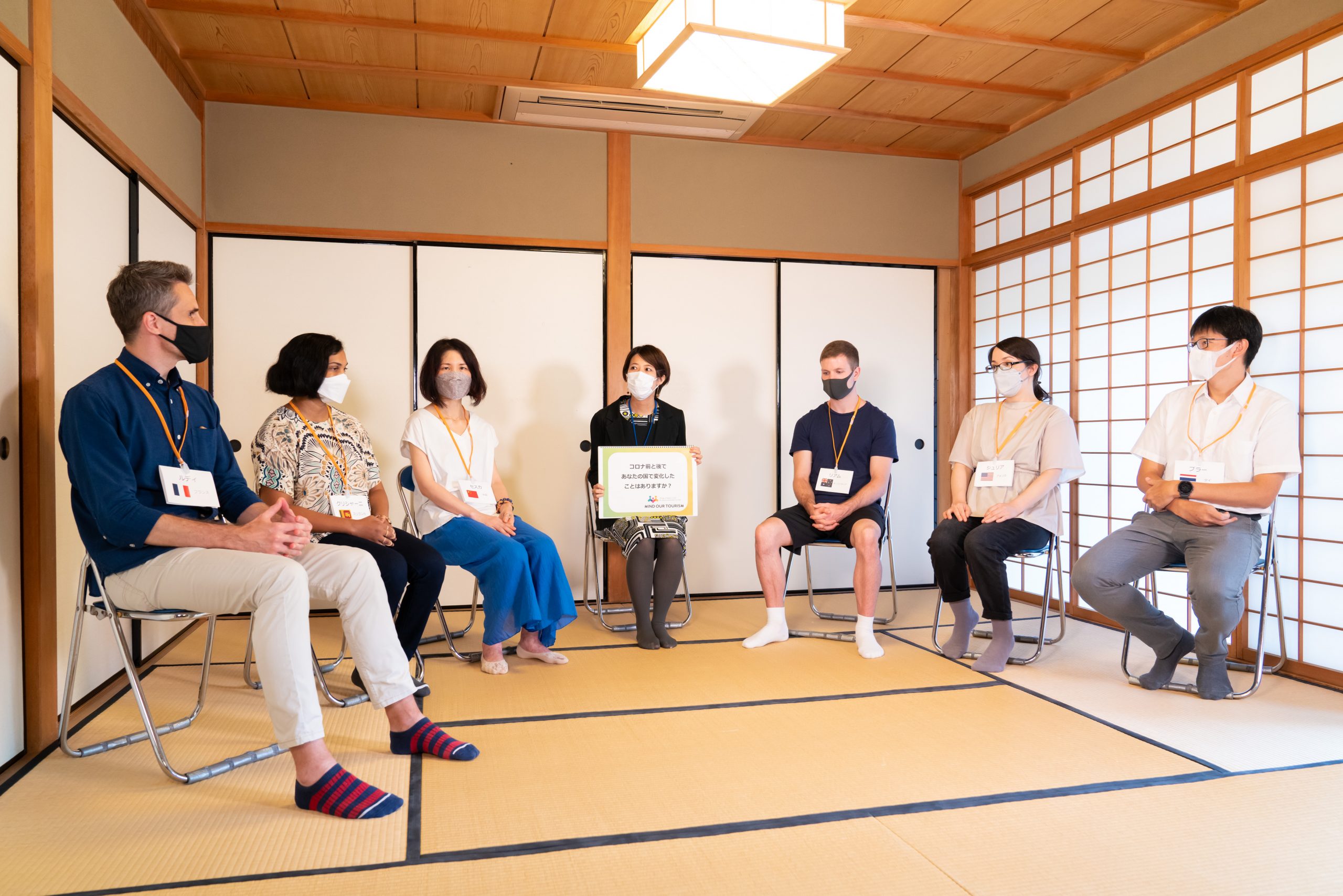
아리마츠: 교토 사람들이 중요하게 여기고 유지하려고 노력하는 것에 대해 배우거나 참여하는 방식으로 교토 관광을 즐기는 것이 가장 좋을 것입니다.
루디: 우선, 교토에 오는 사람들은 일본 문화에 관심이 있어서 옵니다. 교토는 일본의 문화 수도로 여겨지죠. 교토에 머무르는 동안 일본 문화에 온전히 노출되고 싶다면 교토 주민들처럼 행동하고 싶어 할 수도 있습니다. 그렇게 하면 관습이나 사고방식의 차이로 인해 발생하는 문제들을 해결하는 데 도움이 될 것입니다.
말씀: 동시에, 교토 시민들이 세계 문화의 다양성과 다른 나라 방문객들의 사고방식을 인정하는 것이 필요하다고 생각합니다. 서로의 문화에 대한 상호 이해가 증진되면 더할 나위 없이 좋을 것입니다.
아리마츠: 여러분 모두 정말 감사합니다. 저희의 토론이 매우 의미 있는 시간이 되었다고 생각합니다.
다양한 문화적 배경을 가진 관광객들에게 교토의 지역 관습과 예절을 전달하는 방법을 찾는 것은 팬데믹 이후의 교토 관광의 미래를 구상할 때 우리에게 시급한 문제입니다.
이 원탁 토론에서 특히 우리의 관심을 사로잡은 것은 줄리아가 "어린아이처럼 대하는 것 같은 기분"을 느낄 수 있다고 말했을 때였습니다. 우리는 "규칙과 예의를 따르라"는 말을 억압적으로 들릴 수 있는 방식으로 전달하고 있다는 것을 깨달았습니다. 루디가 그것이 어떻게 반발을 불러일으킬 수 있는지 언급했을 때도 마찬가지로 경악스러웠습니다.
극복해야 할 과제가 많다는 것을 잘 알고 있습니다. 하지만 원탁 토론에 대한 이 보고서를 통해 서로의 이해를 소중히 여기고 서로 다른 국가와 문화의 차이를 포용하는 것이 얼마나 중요한지 다시 한번 깨닫게 되셨기를 바랍니다. 우리 모두는 스스로를 되돌아보고, 얻은 영감을 직장과 일상생활에서 실천할 수 있습니다. 교토 관광을 함께 발전시켜 나가는 데 여러분의 많은 응원을 부탁드립니다!

